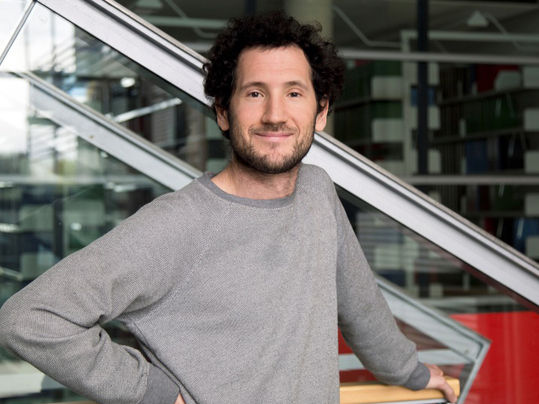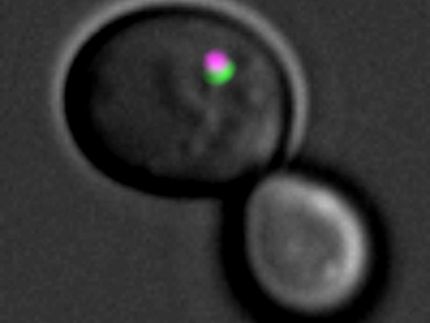Otto Hahn Medal for Jaime Agudo-Canalejo
Advertisement
Im Rahmen der 68. Jahreshauptversammlung der Max-Planck-Gesellschaft (MPG), die am 21. und 22. Juni in Weimar, Jena und Erfurt stattfindet, erhält der Nachwuchswissenschaftler vom Max-Planck-Institut für Kolloid- und Grenzflächenforschung die Otto-Hahn-Medaille. Er wird für seine herausragende Doktorarbeit über die Krümmungselastizität von flüssigen Membranen ausgezeichnet.

Dr. Jaime Agudo-Canalejo
© Max-Planck-Institut für Kolloid- und Grenzflächenforschung
The supramolecular architecture of the living cell is based, to a large extent, on fluid membranes that consist of bilayers of lipid molecules. These membranes provide the interfaces between different cellular compartments, and separate the inside from the outside of the cell. The membranes are fluid and extremely thin: their thickness is only about a millionth of a millimeter! As a consequence, the membranes have unusual fluid-elastic properties: they are very flexible and can easily adjust their shape in response to stimuli or changes in their environment. In his doctoral thesis, which Jaime Agudo-Canalejo did at the Max Planck Institute of Colloids and Interfaces in the department of Reinhard Lipowsky, he elucidated the complex morphological behavior of these membranes and significantly advanced the theory of curvature elasticity.
A particularly interesting and important example for membrane remodeling is provided by endocytosis, the process by which small nanoparticles enter human cells. These nanoparticles might be natural viruses that are infecting the cell, or synthetic particles carrying a medical drug, so understanding this process is of high biomedical importance. During endocytosis, the membrane bends around the particle until the particle is completely engulfed: The particle then ends up inside the cell, enclosed by a membrane coat. Using a theoretical model of membrane elasticity, Jaime Agudo obtained a quantitative description of how endocytosis is enhanced or inhibited depending on the size of the particle and on the so-called spontaneous curvature of the membrane, thereby explaining previous experimental observations. The model also provides insight on how to replicate the process of endocytosis in giant vesicles, synthetic membrane systems that mimic the behavior of real cells and provide important modules for synthetic biology. Besides endocytosis, Agudo has studied other membrane remodeling processes, such as the formation of nanotubes in giant vesicles exposed to asymmetric environments; or the formation of narrow membrane necks in biological and biomimetic membranes, which is relevant to essential cellular processes such as cell division or autophagy.






















































